Akira Toriyama Explains Dragon Ball’s Origin
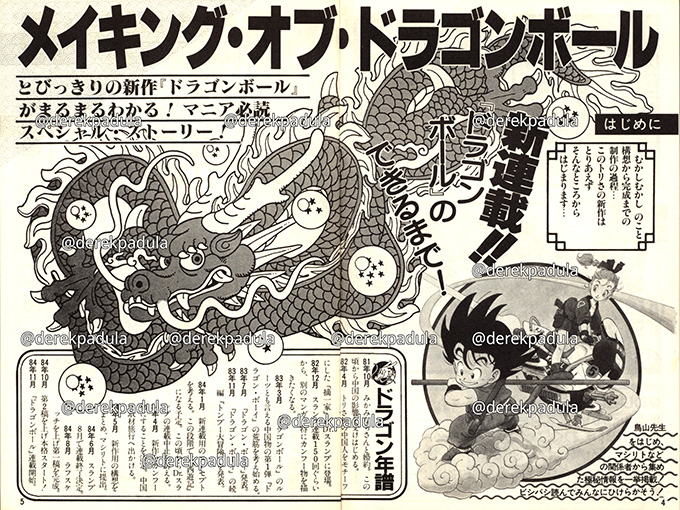
Read Akira Toriyama’s long-lost explanation of where Dragon Ball came from, with my commentary.
I’ve discovered Akira Toriyama’s timeline of Dragon Ball’s origin.
This chronology appeared in Bird Land Press No. 15, from November, 1984.
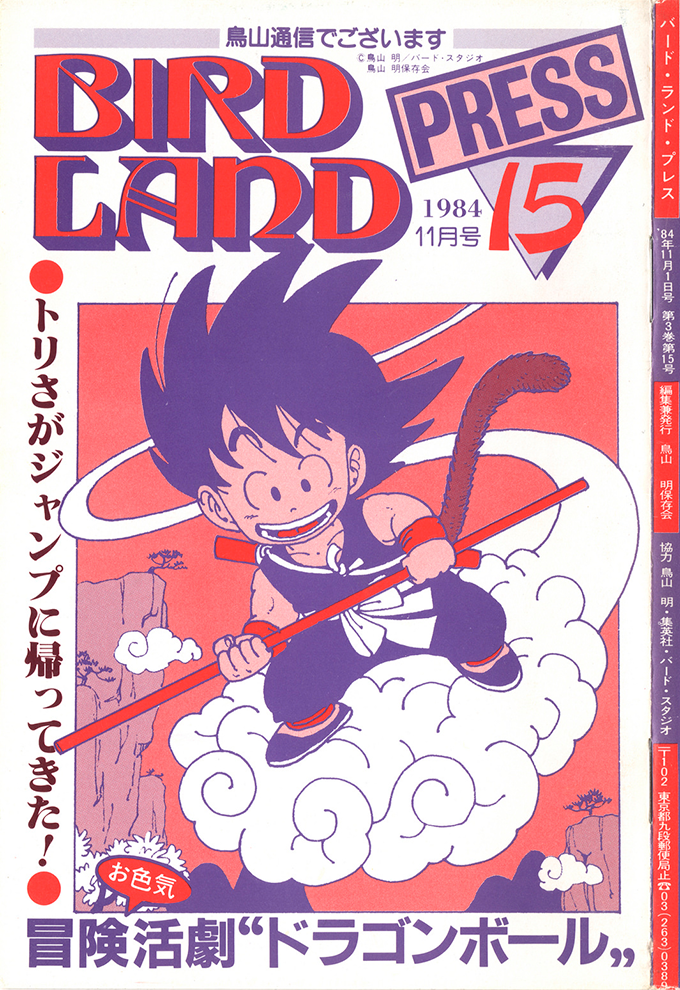
Bird Land Press was an official fanzine created by the Akira Toriyama Preservation Society in Japan.
It consisted of exclusive interviews with Akira Toriyama, his wife, and other people in Toriyama’s life.
Toriyama would often contribute to the magazine with exclusive information that never appeared anywhere else in the Dragon Ball series or guidebooks.
These magazines are rare and expensive. Thankfully, I own 9 issues, out of 25.
In this article we’ll focus on Page 5 of Bird Land Press No. 15, where Toriyama explains the chronological record of where Dragon Ball came from.
This information confirms and supplements what I discuss in my book, Dragon Ball Culture Volume 1: Origin.
I’m publishing it here as a free addition that you can print out and add to the book. If I write a second edition of Volume 1, then I will add this information to it.
Bird Land Press – Akira Toriyama Chronology
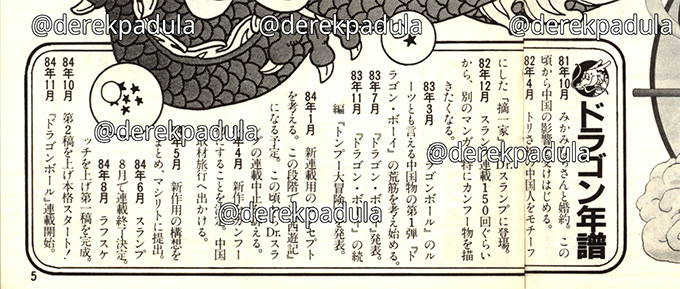
- Here is my translation of Akira Toriyama’s words in the above image. His words read from right to left, and top to bottom.
Dragon Chronological Record
October, ‘81: Engaged to Mikami Nachi-san. Around that time, I began to be influenced by China.[1]
April, ‘82: My first Chinese motif, the Tsun family, appeared in Dr. Slump.[2][3]
December, ‘82: After drawing Slump Chapter 150 or so, I felt like drawing a different manga, especially a kung fu one.
March, ‘83: The beginnings of Dragon Ball, or the first Chinese work that can be said to be art, were when I began to think of the plot of Dragon Boy.
July, ’83: Dragon Boy was announced.[4]
November, ’83: Dragon Boy’s sequel, The Adventure of Tongpoo, was announced.[5]
January, ’84: Thinking of concept art for a new series. At this stage it was going to be based on Journey to the West.[6] I appealed [to my editor Torishima-san] to stop the serialization of Dr. Slump.[7]
April, ’84: Decided to make the work a kung fu thing. Went on a research trip to China.[8]
May, ’84: I summarized the concept of the new action project, and then submitted it to Mashirito [aka Torishima-san].[9]
June, ’84: Slump was scheduled to end in August.
August, ’84: Established the first draft [of Dragon Ball].
October, ’84: Finished the second draft and began in earnest!
November, ’84: Dragon Ball started serialization.
My Thoughts
Akira Toriyama’s wife inspired Dragon Ball.
Mikami Nachi’s interest in China influenced Toriyama to include more Chinese-inspired content in his manga. This combined with Toriyama’s prior interest in Bruce Lee and Jackie Chan films from the 1970s and early ‘80s.
We see this with the Tsun family in Dr. Slump, who are parodies of Chinese people for Toriyama’s Japanese audience.
By December of ’82, he felt like he wanted to do a kung fu manga as a change of pace from Dr. Slump.
Perhaps at the same time, as I discuss in my book, when Toriyama was struggling to come up with an idea for new manga to follow after Dr. Slump, Mikami Nachi suggested to Toriyama and his editor—who was at their house for a brainstorming session—that Toriyama make a kung fu manga. Toriyama’s editor thought this was a great idea, and he then forced Toriyama to do it, despite Toriyama’s objections to not wanting to turn his personal interest into work.
Maybe Toriyama’s recollection here is more accurate and timely than in other interviews that occurred years later. Thus, this moment with Torishima and his wife occurred in December of ’82, and Toriyama describes it here as him feeling like he wanted to do it, rather than being pushed to do so.
It would be another four months until he started to work on the plot for what would become Dragon Boy.
Toriyama then tested the waters with a pair of one-shot manga.
First with the medieval Chinese setting of Dragon Boy.
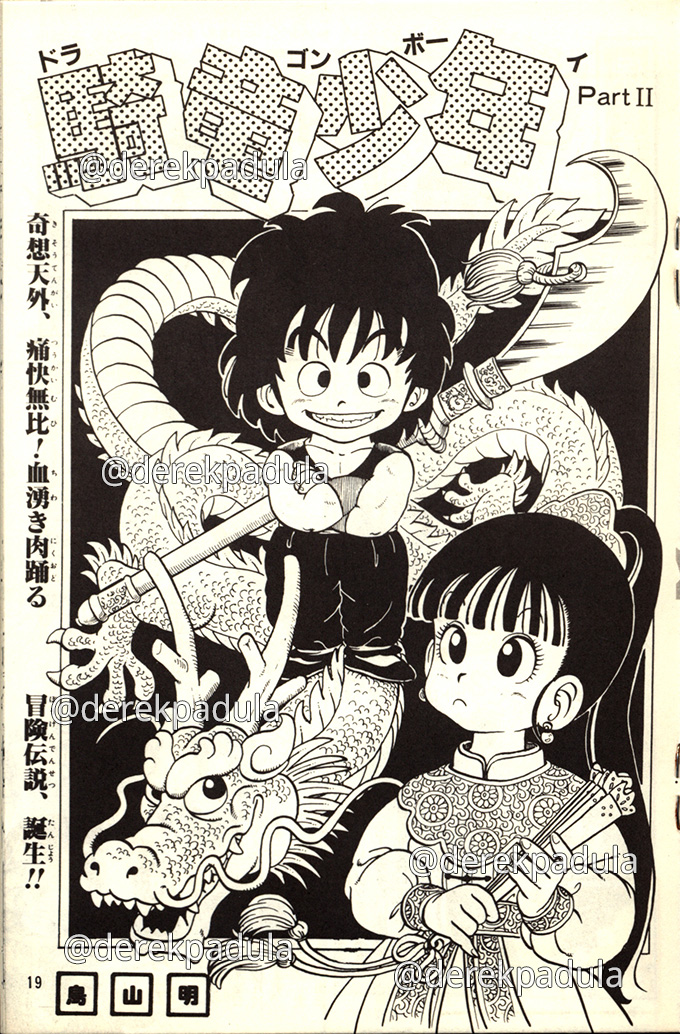
Then with the sci-fi alien setting of The Adventure of Tongpoo.
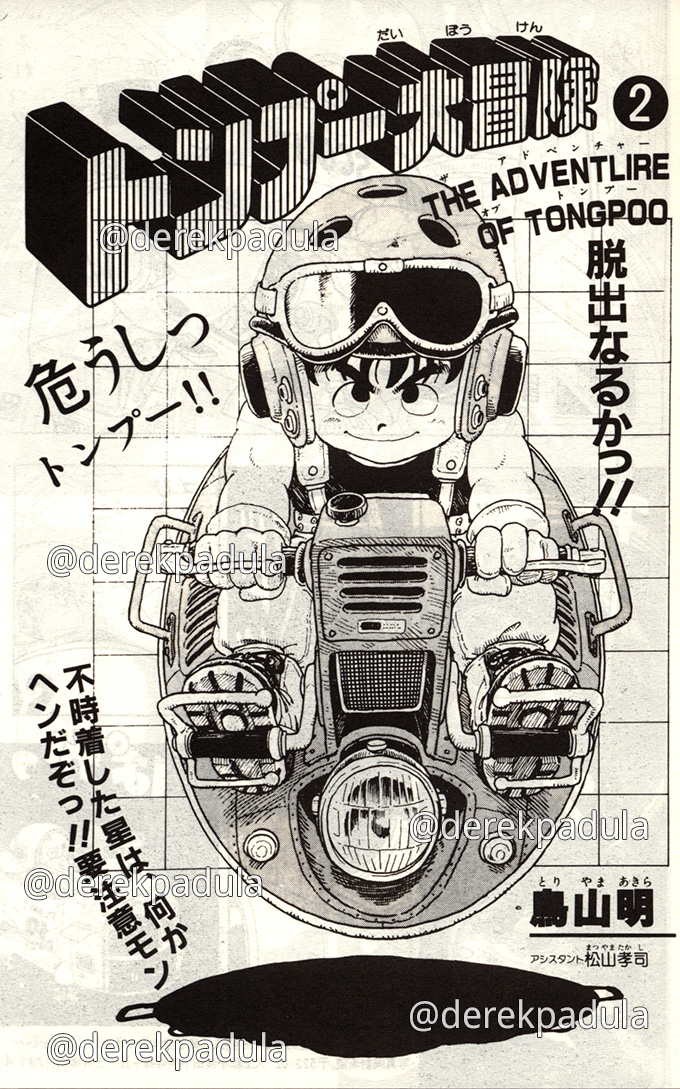
Both of these are reflections of Toriyama’s interests, which fuse together in the eventual Dragon Ball, with its multi-genre approach.
As we see here, in January of 1984, Toriyama intended to make the story based on the ancient Chinese novel of Journey to the West, which is a pop cultural staple in Japanese households.
In April of 1984, he then committed to the idea and traveled to China with his wife.
It was only 7 months later, in November, when Dragon Ball premiered.
Mikami Nachi’s Influence
As the saying goes, “Behind every great man is a great woman.” This is proven by Mikami Nachi, who quit her own successful career as a manga-ka to support her husband’s.
Her decision was influenced by traditional Japanese cultural norms on what is expected of a new wife.
Her own interest in Chinese culture then influenced and strengthened Toriyama’s interest.
In addition to giving Toriyama great ideas, she also drew content in his manga when needed, helped him with women’s fashion in the artwork, and cooked for him when he was working several days straight without sleep in order to meet his weekly deadlines.
Her influence on Toriyama led to one of the most successful manga, anime, video game, music, and merchandise franchises in the world.
Without Mikami Nachi, there would be no Dragon Ball.
Your Thoughts
How do you feel about this old-yet-new definitive timeline of Dragon Ball’s origin?
Now we know where it started, in Akira Toriyama’s own words!
I’ll have more exclusive Bird Land Press content for you in the future, so like, subscribe, follow, share, and do all the things.
Footnotes
[1] Mikami Nachi is Akira Toriyama’s wife, and a former manga-ka. They met while working on manga for the same publisher, Shueisha. After her marriage, she quit being a manga-ka in favor of supporting her husband’s career.
[2] Akira Toriyama refers to himself as Tori-sa. This honorific is a shorthand form of san (Mr. or Mrs.) that is commonly spoken in the countryside. Toriyama’s wife refers to him as Tori-sa, and Toriyama also refers to himself in such a manner. In Dragon Ball, Goku’s wife, Chichi, refers to Goku as Goku-sa. I suspect this is the real-life parallel and genesis of Chichi’s habit.
[3] Dr. Slump (1980) was Akira Toriyama’s first hit manga. It is a gag manga about a genius-but-foolish inventor who makes a super-powered-yet-nearsighted robot girl. The Tsun family were Chinese-inspired people who moved next door to the titular doctor.
[4] Dragon Boy is a manga about a boy with dragon wings who escorts a princess through a medieval Chinese fantasy setting. It premiered in Fresh Jump magazine’s August, 1983 issue, with a street date of June 23, 1983. Toriyama says here that it was “announced” in July. Perhaps a slight error in recollection.
[5] The Adventure of Tongpoo is a manga about an android boy who flies through outer space and meets a beautiful girl on an alien planet. It premiered in Weekly Shōnen Jump #52, of 1983, with a street date of November 29, 1983. As above, Toriyama says it was “announced” in November. This time, accurately.
[6] Journey to the West is the Chinese legend about the Monkey King Sun Wukong and his journey to escort a Buddhist monk to India and back to recover Buddhist sutras.
[7] Kazuhiko Torishima-san was Akira Toriyama’s first editor and the man who discovered his talent and gave him a chance at being a professional manga-ka.
[8] Akira Toriyama went on a research trip to China with his wife and his editor.
[9] Mashirito is the name Toriyama gave to a parody of his editor, Torishima-san, inside the work of Dr. Slump. He is an evil inventor who wants to control everything and reject all of Toriyama’s best ideas. The name went on to become the defacto way that Toriyama referred to the real person, as seen here.
